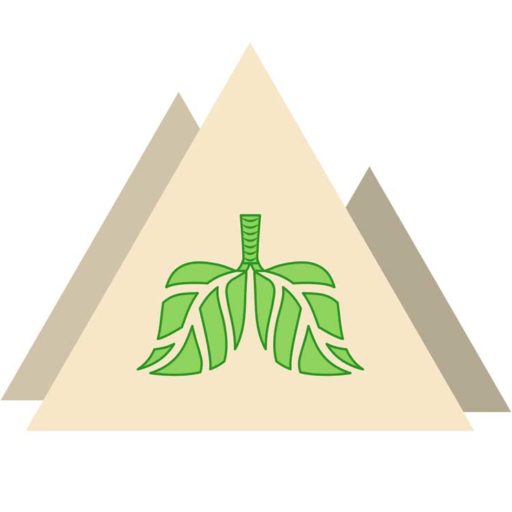Last week we went into more detail about Asthma, a respiratory condition that many of our Little Himalaya customers suffer from, today we are going to cover another condition, COPD, in more detail.
Chronic Obstructive Pulmonary Disease (COPD) is a progressive lung disease that makes it difficult to breathe. It is a combination of two lung conditions, chronic bronchitis and emphysema, which cause inflammation and damage to the airways and air sacs in the lungs. This leads to a narrowing of the airways and a decrease in the amount of air that can be inhaled and exhaled.
COPD affects millions of people worldwide and is the fourth leading cause of death in the United States. It is most commonly caused by smoking, but can also be caused by exposure to air pollution, secondhand smoke, and certain types of occupational dust and chemicals.
Symptoms of COPD include chronic cough, shortness of breath, wheezing, and chest tightness. These symptoms typically worsen over time and can greatly affect a person’s quality of life. In advanced stages, COPD can lead to severe lung damage, respiratory failure, and even death.
There is no cure for COPD, but there are treatments available to help manage the symptoms and slow the progression of the disease. The most important treatment for COPD is to quit smoking. This can greatly improve lung function and reduce the risk of complications.
Medications are also used to treat COPD. bronchodilators, which relax the muscles around the airways and make it easier to breathe, are commonly prescribed. These can be taken in the form of inhaled medications or pills. Inhaled corticosteroids can also be prescribed to reduce inflammation in the airways.
Oxygen therapy is also an important treatment for COPD. This involves breathing in oxygen through a mask or tubes to help increase the amount of oxygen in the bloodstream. This can help reduce shortness of breath and improve quality of life.
Pulmonary rehabilitation is a program that can help improve breathing, increase endurance, and reduce symptoms. This usually includes a combination of exercise, education, and support.
Surgery is also an option for some people with severe COPD. Lung volume reduction surgery removes small wedges of damaged lung tissue, which can help make it easier to breathe. Lung transplantation is also an option for some people with severe COPD, but it is a complex and risky procedure.
Salt therapy can benefit people with COPD in several ways. First, the salt particles help to clear mucus and other debris from the airways, which can make it easier to breathe. The salt particles also have anti-inflammatory properties, which can reduce inflammation in the airways and improve lung function.
Inhaling salt particles can also help to improve the overall immune system, which can help to reduce the frequency and severity of COPD exacerbations. Salt particles also have antimicrobial properties, which can help to kill bacteria and other pathogens in the lungs, reducing the risk of infection.
Salt therapy can also help to reduce stress and anxiety, which can be a common problem for people with COPD. The warm, relaxing environment of a salt cave or salt room can help to promote feelings of calm and well-being.
It is important to note that while salt therapy may be beneficial for people with COPD, it should not be used as a replacement for traditional medical treatments. It should be used in conjunction with other treatments prescribed by a healthcare provider.
It is important for people with COPD to have regular check-ups with their healthcare provider to monitor the progression of the disease and adjust treatment as needed. With proper treatment, people with COPD can lead fulfilling lives and continue to do the things they enjoy.
It is also important to note that COPD is a preventable disease. Quitting smoking and avoiding exposure to air pollution and other lung irritants can greatly reduce the risk of developing COPD.
In conclusion, COPD is a progressive lung disease that affects millions of people worldwide. It causes inflammation and damage to the airways and air sacs in the lungs, leading to a narrowing of the airways and a decrease in the amount of air that can be inhaled and exhaled. While there is no cure for COPD, there are treatments available to help manage the symptoms and slow the progression of the disease. With proper treatment and management, people with COPD can lead fulfilling lives and continue to do the things they enjoy.
Disclaimer: The information provided in this blog post is for educational purposes only. It does not constitute medical advice. Always consult with a healthcare provider for personalized recommendations.


Recent Comments